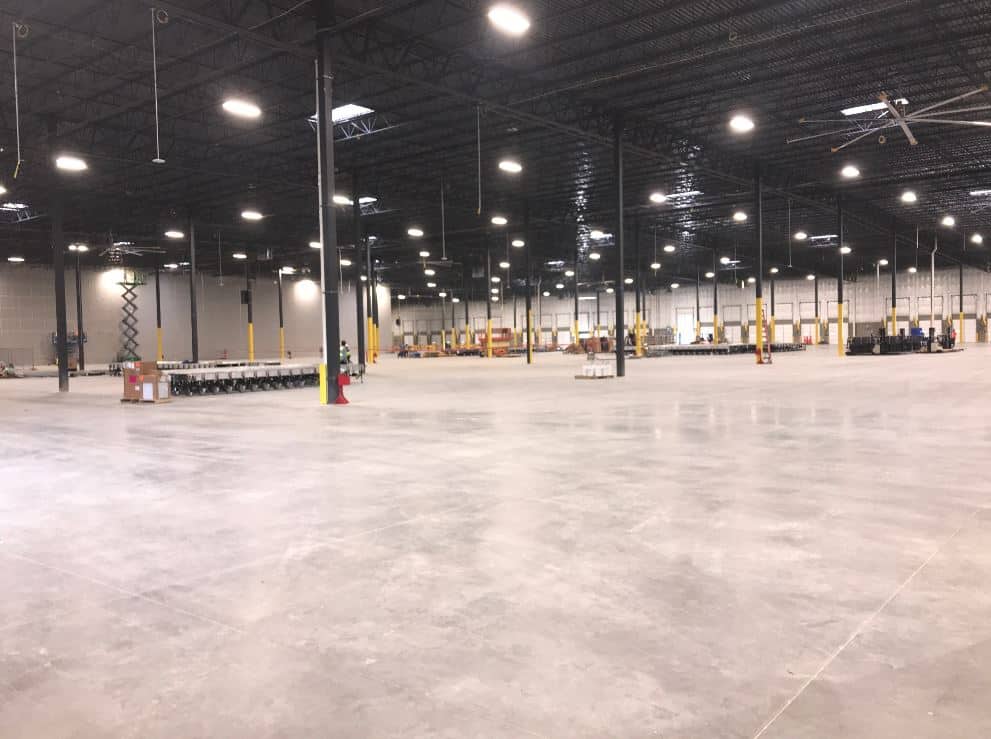
History and Growth of Polished Concrete
The process of polishing concrete was discovered in the early 1990’s by a crew in Tunisia whose purpose was to finish a concrete slab and accidentally polished it dry. As a result, the finish became highly desired by the building owner and quickly gained popularity around the world. Today, we see polished concrete in several interior applications, such as warehouses, car dealerships, box stores, etc. One of the initial challenges the industry faced was lack of quality control and standardized processes that were measurable to create the desired finish. In the past two decades, several professional trade organizations have invested time, money and energy to create standardized specifications and control measures which have since allowed the industry to replicate polished concrete in an effective way.
ACI 310.1-20 Specification for Polished Concrete
The American Concrete Institute (ACI) in conjunction with the American Society of Concrete Contractors (ASCC) realized the issue of replication and created a standard specification. It is known as ACI 310.1-20: Specification for Polished Concrete Slab Finishes. In short, it outlines the process of polishing a slab as well as establishing control measures to ensure the quality of the finish. Using a distinctness of image meter (also known as concrete clarity meter) measures the sharpness and reflectiveness of the polished surface. The meter then produces a value (DOI value, percent) that is then compared to table 3.2.4.1 in the ACI specification to determine the gloss level. It would also be important for a specifier to look at table 3.2.3.1 to determine the aggregate exposure level required.
DCOF Testing and ANSI A137.1 Compliance
It should also be noted that in 2015 at World of Concrete, the ASCC conducted a study on the dynamic coefficient of friction (DCOF) on polished concrete. ASCC created numerous slabs with different aggregate exposure and gloss levels which were subsequently tested for DCOF by the Tile Council of North America. From this study, it was determined polished concrete floor slabs exceed the minimum DCOF for interior tile finishes on a floor which is set by ANSI – refer to ANSI 137.1.
CSDA Standards and Roughness Average
Back in 2013, another professional organization known as Concrete Sawing and Drilling Association worked with ASME, ASTM, and ACI to produce another version of a standardized specification for polished concrete floor finishes. The control value created was called roughness average, which is derived from a test that measures concrete micro surface texture. By determining the roughness average of the surface, a contractor/engineer/architect will be able to determine the surface grade (gloss level) of the floor. The specification also includes aggregate exposure levels, just like the ACI specification.
The Polished Concrete Industry Today
The polished concrete industry is one of the fastest-growing markets in the construction world today. It is also an evolving industry as professional trade organizations continue to refine standard specifications and control measures. W. R. Meadows has been committed to providing and manufacturing the highest quality densifiers for the industry. We have also made great strides to create continuing education opportunities for specifiers of polished concrete floors.
If you would like to schedule a lunch and learn on polished concrete, please visit: www.wrmeadows.com/product-seminar-request-form/
CEU accreditation: AIA/HSW/IDCEC
References:
- https://ascconline.org/Portals/ASCC/CPC-PS-2-Slip-Resistance.pdf
- https://www.concretedecor.net/departments/grinding-polishing/polished-concretes-new-texture-standard-could-mean-a-glossier-future/
- https://www.concretedecor.net/departments/grinding-polishing/the-csdas-new-concrete-texture-standard/
- https://www.concrete.org/Portals/0/Files/PDF/Previews/310.1-20_preview.pdf
Request More Information
To contact your local W. R. MEADOWS representative or for general correspondence, please click here. If you need immediate assistance, please call (800) 342-5976. Thank you!

 Canada
Canada Français
Français Español
Español International
International


